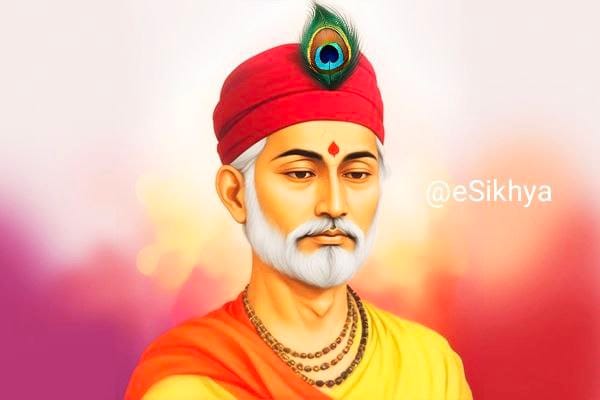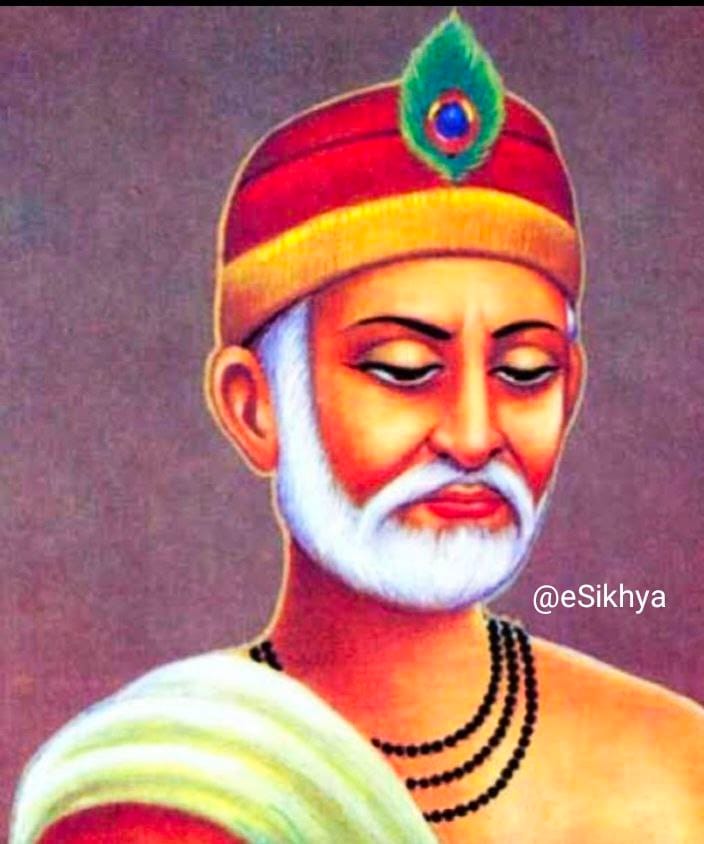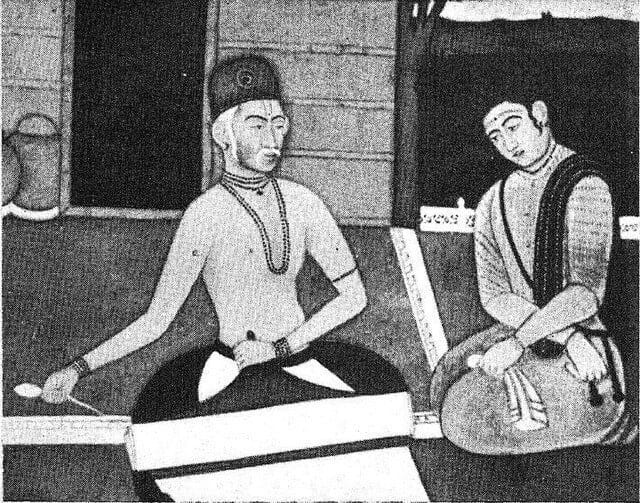Kabir – Introduction & Syncretism
Kabir was a 15th-century Indian poet-saint whose work has had a lasting influence on Indian spirituality and literature.

Here’s an overview of his life, teachings, and impact :
Life and Background
- Birth and Early Life: Kabir is believed to have been born around 1440 in Varanasi (Benaras), a major cultural and religious center in India. His origins are somewhat mysterious, with different accounts suggesting he was raised by a Muslim weaver family but had connections with both Hindu and Sufi traditions.
- Spiritual Search: He spent his life wandering and engaging with people from various backgrounds, reflecting his syncretic approach to spirituality.
Teachings and Philosophy
- Universal God: Kabir’s teachings emphasize the idea of a single, universal God that transcends the boundaries of organized religions. He used simple language and everyday imagery to convey complex spiritual ideas.
- Critique of Rituals: He was critical of both Hindu and Islamic ritualistic practices, advocating instead for a direct, personal experience of the divine. He saw true devotion as something that transcended ritualistic and external practices.
- Social Equality: Kabir spoke out against the caste system and social hierarchies, emphasizing the equality of all people before God. His teachings challenged the social norms and religious authorities of his time.
Poetry and Literature
- Verses: Kabir’s poetry is known for its simplicity, vivid imagery, and profound spiritual insights. His verses often use metaphors and allegories to convey messages about the divine, the nature of human existence, and the importance of inner devotion.
- Collections: His hymns have been collected in various compilations, such as the “Bijak” and the “Kabir Granthavali.” His work has also been included in the Guru Granth Sahib, the holy scripture of Sikhism.
Impact and Legacy

- Bhakti Movement: Kabir played a significant role in the Bhakti movement, which emphasized personal devotion to God and sought to transcend sectarian divides. His teachings influenced many Bhakti poets and saints.
- Sikhism: Kabir’s ideas contributed to the formation of Sikhism, particularly through the incorporation of his hymns into the Sikh holy scripture.
- Cultural Influence: Kabir’s poetry continues to be influential in Indian literature, music, and spirituality. His hymns are often recited and sung in devotional practices and are celebrated for their universal appeal and spiritual depth.
Kabir’s legacy endures as a symbol of spiritual unity and social reform, and his teachings continue to inspire people across various religious and cultural contexts.
Kabir - Syncretism
Kabir is often cited as a key figure in the history of religious syncretism in India, where his work and teachings exemplify the blending of diverse religious and philosophical traditions.

Here’s how Kabir’s life and poetry reflect Syncretism :
- Blending Hinduism and Islam: Kabir’s spiritual teachings draw on both Hindu and Islamic concepts, reflecting his own background and the religious milieu of his time. He integrated ideas from both traditions into his poetry, which often critiqued the rigid boundaries between them. For example, he used imagery and concepts from Hinduism, such as the idea of the divine as a personal, loving entity, alongside Islamic notions of monotheism and devotion.
- Critique of Ritualism: Kabir’s poetry often criticizes the ritualistic practices of both Hinduism and Islam, advocating instead for a direct, personal experience of the divine. This critique of ritualism is a common theme in both traditions and reflects his syncretic approach to spirituality, which emphasizes personal connection over institutionalized practices.
- Rejection of Caste and Social Hierarchies: Kabir’s teachings challenged the caste system and social hierarchies prevalent in his time. By emphasizing the equality of all people before God and criticizing the social divisions perpetuated by religious authorities, Kabir’s message resonated with both Hindu and Muslim communities and further highlighted his syncretic approach.
- Universal Spirituality: Kabir’s vision of spirituality transcends specific religious identities. He advocated for a universal approach to understanding and experiencing the divine, which appeals to followers of various religious traditions. His poetry often reflects a desire for unity and the belief that ultimate truth and divine presence can be accessed regardless of one’s religious background.
- Influence on Later Movements: Kabir’s syncretic ideas influenced the Bhakti movement, which sought to transcend religious divisions and promote devotional practices focused on a personal relationship with God. His teachings also impacted Sikhism, which incorporates many of Kabir’s themes, such as the rejection of ritualism and the emphasis on devotion to a single, universal God.
Conclusion
In summary, Kabir’s life and work exemplify religious syncretism by blending elements from Hinduism and Islam, critiquing ritualistic practices, and promoting a universal spirituality that challenges social and religious divisions. His teachings continue to be a powerful testament to the potential for dialogue and unity among diverse religious traditions.
Share this content:
Andrea Whitesinger
Your consistency in tone, quality, and clarity is something I deeply admire. Every post feels like it belongs to a trusted series.




1 comment